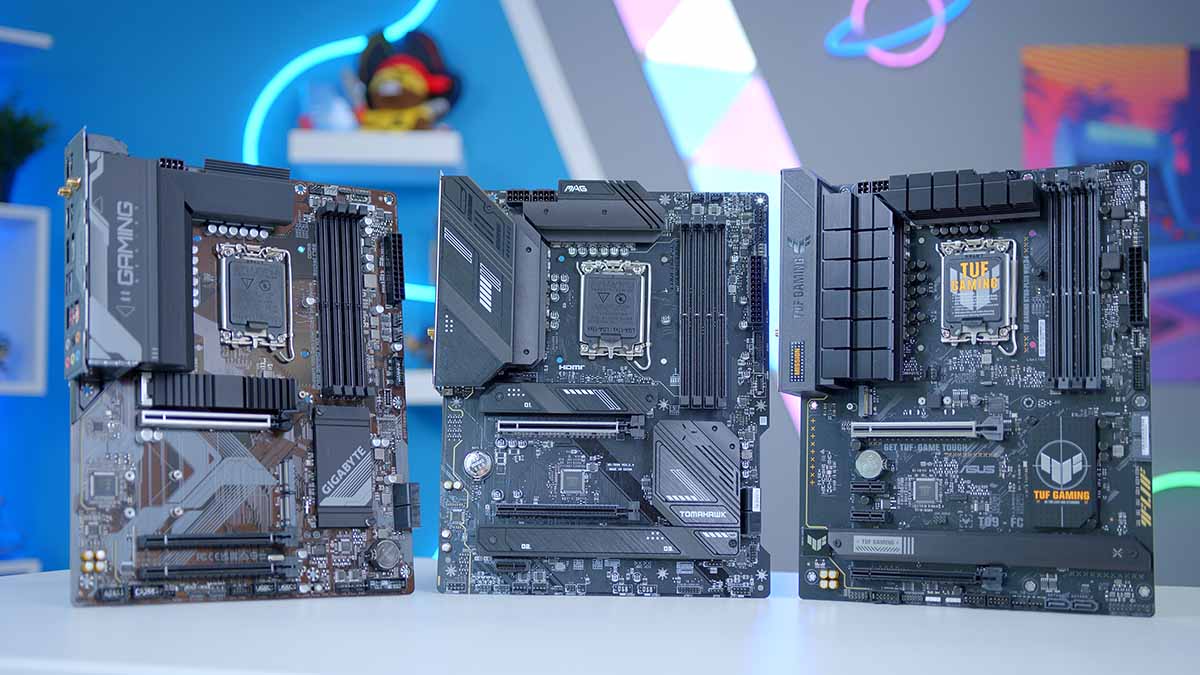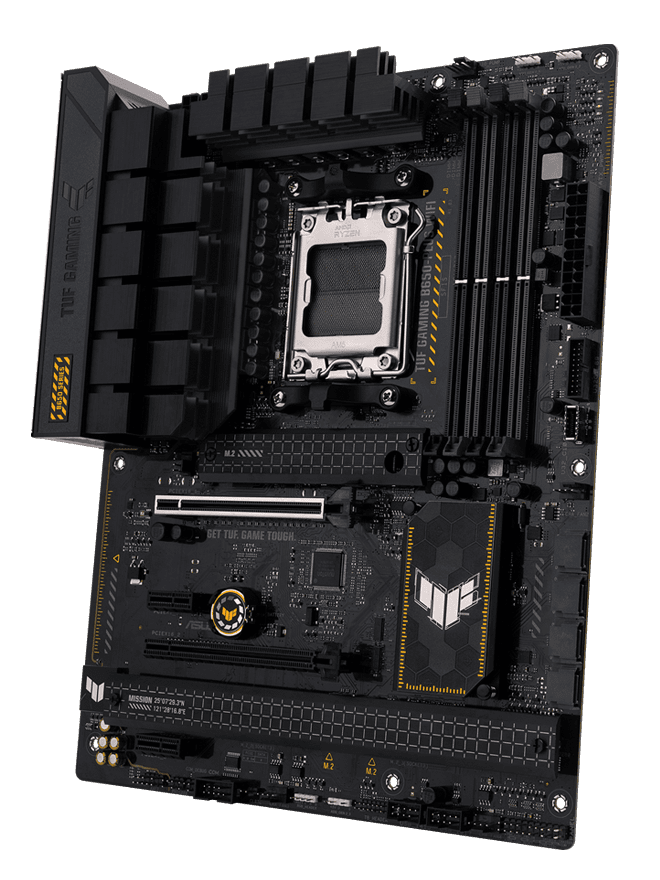Are you tired of investing in your motherboard whenever a new processor comes out? This blog is about helping you decide on the best future-proof motherboards. It will guide you on whether to leap to the latest processor or stick with your old one. Will your gaming capability take a hit if you don’t upgrade, or does your old rig have some juice? By the end of the blog, you will know all the answers.
Motherboards are a complex combination of PCIe protocols, DIMM, chipset, audio, and network generations. Deciding whether you should take the leap and invest in a newer next-gen motherboard can be overwhelming. Our approach is to help our readers find the best motherboard to support upcoming technologies and predict when it will become obsolete. So, let’s begin with our guide!

Should You Leap Now? Evaluating Your Current Motherboard
If you worry you might hang onto your old gaming PC hardware too long, then you are not alone! It’s a question every gamer questions themselves with. Next-generation games are going to rely on powerful hardware for performance. Staying relevant to the evolving tech is vital financially and concerning a gaming career. So, let’s access the current hardware to see if we need an upgrade.
Processor Compatibility: The Ever Changing Sockets
As much as we want to believe, processors are usually not the cause of low performance in gaming. Most modern games work with processors that are 3 or 4 generations old. However, processors are the key players in compatibility with the latest graphics cards and RAM hardware requirements.
Intel has recently stuck to their LGA1700 socket, and AMD with their AM5 socket for a while now. It means the need for constantly changing motherboards per generation is slowing down. Manufacturers are switching towards future-proof socket design, which does not make motherboards irrelevant to every generation. Here are our two cents on processors:
- You don’t need to upgrade if you have an LGA1700 or AM5 socket motherboard. 13th Gen Intel and AMD 7000 series processors are fast enough for modern gaming.
- Any socket older than Intel’s LGA1700 or AMD’s AM5 will not feature PCIe 5.0 or DDR5 connectivity.
DIMM Slot: DDR Versions
Gamers can’t stop talking about RAM. It’s like the oxygen of their virtual worlds. It’s because its impact on gaming is always up for debate. Currently, DDR5 RAM is the fastest available owing to its 6400MHz speed compared to the 3200MHz of its predecessor, DDR4. After observing the benchmarks, we see that the performance shift is insignificant. So here are some tips on RAMs:
- DDR5 can improve around 7% of the overall gaming performance compared to DDR4 RAM.
- DDR5 costs twice as much as DDR4. It makes DDR4 an ideal solution for the price/performance ratio.
- Lower resolution 1080p gaming is the most affected by the RAM generation compared to 4K gaming.
- If you have a DDR3 PC, consider upgrading. In contrast, owners of a DDR4-based PC can stick with their current RAM and not expect a significant performance difference in jumping generation.
Chipset Conundrum: Foundation of a Good PC Build
The foundation of any good build is the chipset. It sets the protocols and speed limits for the highway on which data will travel. The Z-series Intel chipsets and the X-series AMD chipsets are the best. However, the version keeps changing with generations. Here are our tips to consider:
- If your chipset features PCIe 4.0, it’s okay, as the performance jump between 5th and 4th generation PCIe lanes is negligible.
- If you are considering buying a new gaming motherboard, look for PCIe 5.0 lanes on x16 slots and M.2 NVMe slots.
- Consider the PCIe lanes it offers for M.2 SSDs, GPU, and other expansion cards when selecting a motherboard.
PCIe Generation: Is Bandwidth Bottlenecking Your Performance?
Considering the bandwidth difference between PCIe 4.0 and PCIe 5.0, there may be better financial decisions than upgrades. So let’s see why PCIe 4.0 is still powerful for all your PC components:
- Currently, the Nvidias RTX 4000 and AMD 7000 series still utilize PCIe 4.0 for operation.
- The only GPU that works on PCIe 5.0 is Moore Threads MTT S80, a Chinese homegrown graphics card that still underperforms most Nvidia and AMD GPUs.
- PCIe 4.0 is still good enough if you have it in your current PC. However, if you are upgrading, consider PCIe 5.0 for future-proofing
Feature Factor: Audio, Network, and Other Crucial Considerations
Gaming depends on pristine audio and fast internet connection for maximum performance. As a gamer, you can make a career out of buying and selling Fortnite V-Bucks or game accounts from trusted marketplaces. However, consider audio, network, overclocking, storage capacity, and other factors when purchasing a motherboard to make the career convenient. Here are things to consider:
- Audio:The chipset should support High-resolution audio, with each signal separated by different motherboard layers. A multilayer thick PCB can perform better heat dissipation and prevent signal interference. Using high-end Japanese capacitors leads to a better and more powerful wired audio experience.
- Network:Whether it’s wireless or wired connection. The speed of the internet and its latency are vital to gaming. High latency or sluggish net can lead to degraded performance in online gaming. Ensure the new motherboard has at least 1G of Ethernet and WiFi-6.
- VRM:The voltage regulating module provides steady power to the CPU. It is the most vulnerable component of a motherboard. It provides power for all the devices that draw power from the motherboard. High-end processors need decent power to operate. A higher number of power stages, preferably 8+, only heat up slowly and overclock the processor without hiccups.
- Heat Sinks:If your motherboard has small heatinks and you play games 24/7, it’s a big problem. Sooner or later, the motherboard VRM or other hardware will take the toll. So having large heatsinks over VRM, M.2 SSDs, and motherboard chipset is vital.
Part 2: Predicting the Future: Investing in Motherboard Longevity
Investing in tech can be challenging. Predicting what will happen next requires staying in the news. Here are our predictions based on the information available:
PCIe 5.0 Pioneers: Is the Next-Gen Standard Worth the Jump?
Considering that all the current Nvidia and AMD graphics cards still utilize the PCIe 4.0 protocol, is the jump worth it? The benchmark results clearly state that the jump is not worth it. The trend of rising demand for next-generation graphics cards is slowing down. The new FSR and DLSS technologies are bringing older-generation cards to life.
So, only consider PCIe 5.0 if you are buying a new motherboard. Make sure to switch to PCIe 5.0 deliberately. The cost is too high compared to the performance jump.
DDR5 Dilemma: Early Adopter or Wait it Out?
Plenty of motherboards feature DDR4 with the latest generation of processor support. They are the best, as DDR5 is still too expensive, and the performance upgrade is not worth the cost. If you want budget options, it’s best to go for a DDR4 DIMM slot with a PCIe5.0 capable motherboard.
Chipset Crystal Ball: Predicting the Lifespan of Current Tech
Chipsets set the foundation of a build. Intel, with its Z series motherboard, is leading the market. In comparison, AMD still has a big chunk of market share, with their AM5 X and B series having solid results.
- If you are a gamer on a budget, consider the Intel Z600 series and AMD B series motherboard with DDR4 and PCIe 5.0 support.
- A gamer without budget constraints can always go for DDR5 and PCIe 5.0 for maximum long-term relativity.
Part 3: Best Future-Proof Gaming Motherboards for AMD and Intel
Are you considering buying a motherboard but still can’t decide which is the best for your next future-proof build? Here are our top pick of motherboards that are relevant and powerful to the next-generation games and hardware:
1. ASUS TUF Gaming B650-PLUS – Best Budget Gaming Motherboard
Key Features
- Budget Friendly with PCIe 4.0 PCIe x16 Slot
- Supports PCIe 5.0 for M.2 SSD Slots
- 1 Channel Dedicated Audio PCB Layers
- Front and Back USB 3.2 Gen 1 Type-C Support


2. MSI MPG Z690 Carbon WiFi – Best High-End Gaming Motherboard
Key Highlights
- 8-layer PCB with 2oz Copper Tracing
- Thermal Pads, Heat-Pipe, Chipset, and M.2 Heat Sinks
- Dual PCIe 5.0 x16 Slots for Graphics Cards
- Intel WiFi-6E and 2.5G LAN
3. MSI MPG Z790I Edge WiFi – Best Mini-ITX Gaming Motherboard
Key Highlights
- Lighting USB 20G Support
- Future Proof DDR5 and PCIe 5.0
- 125GB/s PCIe x16 Interface
- Direct 10+1+1 VRM Phases for Power
4. Asus ROG Strix X670E-E Gaming – Best PCIe 5.0 Gaming Motherboard
Key Highlights
- 192GB 8000+MHz DDR5 RAM Support
- 3x M.2 PCIe 5.0 and 1x M.2 PCIe 4.0 Slot
- 18+2 VRM Stages with 110A per Stage
- AI-Based Overclocking
5. ASRock Z790 Taichi Lite – Best mATX Gaming Motherboard
Key Highlights
- 12/13/14th Gen Intel Processor Support (LGA1700)
- Upgradable M.2 Key-E with WiFi-6E + BT 5.3
- 8+8 12V Power Supply for Overclocking CPU
- 15u Gold Contact PCIe 5.0 Slots
The Verdict: When to Buy a New Motherboard
So, let’s summarize the complete discussion.
- There is no need to upgrade the processor or motherboard for DDR5 or PCIe 5.0. Only upgrade if you have PCIe 3.0 or DDR3 featuring motherboard.
- When purchasing, look for more VRM power phases, DDR5 DIMM slots, PCIe 5.0 x16, and M.2 slots to ensure a future-proof motherboard.
- AMD, with their AM5 socket and Intels LGA1700 sockets, have stayed the same for at least 2 years.
- Consider cooling capabilities like liquid cooling, pump connectivity, PCB layers, and heat sinks.
We hope you find the guide helpful. We hope you find contentment with your current device or buy your perfect new future-proof hardware!
Must Read

